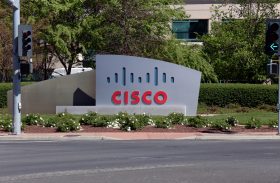Is Intent-Based Networking SDN 2.0?

SAN JOSE, Calif. -- NetEvents -- On a series of panels here in the heart of the networking world, experts had fun discussing whether intent-based networking (IBN) is the next new thing.
Of course, new buzzwords proliferate in the networking world faster than NFL players can kneel for national anthems. We also have application-driven networking (ADN). We're also still looking for the autonomous networks. But it's clear that IBN is gaining momentum. What does it mean?
It means that intent-based systems are just the next evolution of SDN, where interoperable systems and APIs now set the foundation to program higher levels of automation and intelligence to run networking infrastructure. You could call it SDN 2.0.
Targeting Network Opex
There seems to be some consensus that IBN is an attempt to relieve the huge cost burden of operating networks for enterprises and service providers alike, primarily by removing time-consuming manual configuration tasks with automation. Yes, just as autonomous vehicles may replace taxi or Uber drivers, IBNs aim to replace network managers -- or at least move them into other jobs.
As Futuriom has described before, the technology promises to establish a higher, more intelligent layer of network management that allows the infrastructure to be programmed to respond to fit the intent of applications, rather than being manually configured (which can result in it frequently breaking).
Several panelists used figures from major research services citing that the operational cost of running network infrastructure that delivers all your Netflix video and social media clips is three to four times the cost of the capital expense of the network. In other words, if you can cut the operational costs by 25 percent, you have saved your total capital expense (capex).
"It's powerful automation," said Mansour Karam, a cofounder and CEO of Apstra, a startup that last year launched its Apstra Operating System (AOS), a programmable tool for automating networks driven by the concept of IBN. "You can reduce outages because 80 percent of outages are human error."
Apstra recently found itself in a fun marketing battle with Cisco, which decided in a public shift that IBN is now a thing. Cisco does not have a specific IBN product, but it's now marketing it as the future of its efforts. However, a Cisco spokesman here appeared to hedge whether IBN means using a collection of open hardware.
"Hyperscale vendors... can bring up their own skill set," said Prashanth Shenoy, VP Marketing, Cisco's Enterprise Networking Group. "They can go with a disaggregated model. They can bring up off-the-shelf hardware. But, that skill set is not in every organization. That's where there is more of an integrated architecture with a consistent set of APIs. It can be from one vendor or multiple vendors."
Open Networks Set the Stage for IBN
So how does IBN relate to SDN? Or is it just wonky marketing jargon?
Karam says that Cisco has been dragged into IBN because the end-users have been pressured to open up its application programming interfaces (APIs), which wasn't the case five years ago. This means that companies such as Apstra or others can get the information they need from more open hardware, making the timing right for IBN. The best way to think about it is, if you want the plane to fly itself, you need data and sensors from all the plane's hardware systems to talk to the automated system in the cockpit.
Other executives in the open networking market say that the opportunity for IBN would not be possible without the new ecosystem of open networking vendors who have "disaggregated" network hardware from software -- which is the foundation of the SDN movement.
JR Rivers, CTO and Cofounder of Cumulus Networks, a pioneer in SDN, pointed out on a panel that attempts at IBN have failed in the past. But he said that IBN may now be more of a possibility because of wider adoption of industry-standard hardware and the disaggregation model of separating networking hardware and software.
"Industry standard hardware needs to be interchangeable," said Rivers. "Then you have independent pieces of software. Then you will have overriding intent systems to drive all of that."
Jeff Baher, Senior Director of product marketing at Dell EMC, also pointed out that the open networking hardware movement, and open APIs, have enabled IBN.
"IBN and application-specific networking are not necessarily new," said Baher. "But there is a significant amount of new technology available to solve this problem -- some of the people on this panel wouldn't be here if there wasn't a disaggregated model."
However, Baher reiterated that not all enterprises are ready to jump to sophisticated IBN approaches when they are having basic struggles managing their networks.
"A lot of what we talk about is Facebook, Amazon, and Google. Their operations and approaches are born out of the necessity to run at true hyper-scale. There is some balance as we come down to earth with smaller networks that may not have the same driver."
One thing is clear -- the IBN and SDN debate will now have marketing professionals working overtime to explain what it means to customers. And it gives analysts plenty of material to write about.
















